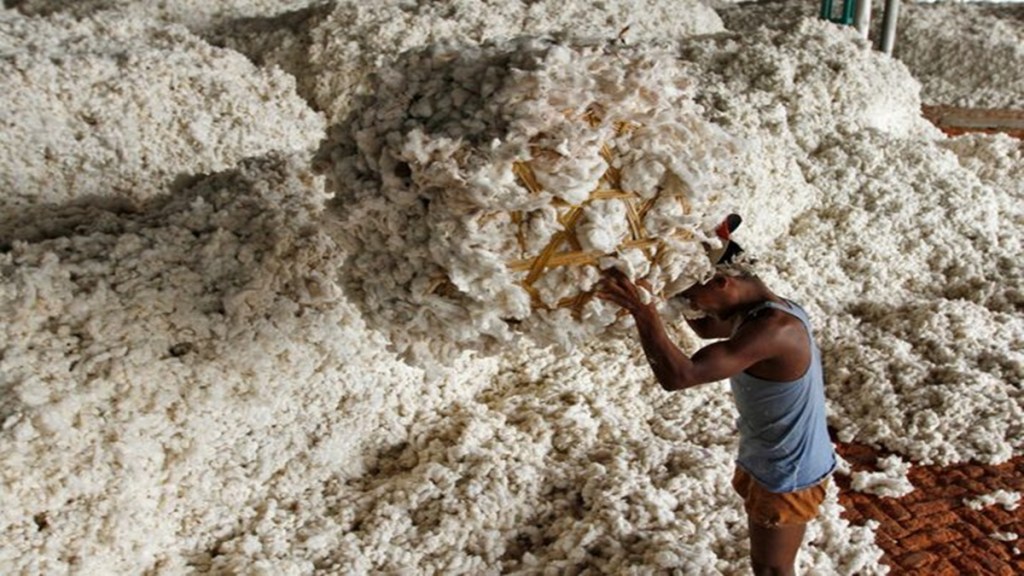By Ashok Gulati and Ritika Juneja
As the clock ticks to the July 9 deadline, US negotiators are turning up the heat, urging India to open its agriculture market to genetically modified (GM) crops. Finance minister Nirmala Sitharaman has declared agriculture and dairy as sacrosanct “red lines”, warning that accepting GM imports could jeopardise both farmers’ livelihoods and food safety. Meanwhile, global GM crop adoption has skyrocketed since 1996. As of 2023, over 200 million hectares (ha) of GM soya bean, maize, canola, and more are in cultivation across 76 countries. India’s refusal to budge can become a major challenge in sealing the trade deal.
The only GM crop in India is cotton. Atal Bihari Vajpayee’s government in 2002 took this bold decision. Today, more than 90% of India’s cotton area is under Bt cotton, and its seed is fed to cattle. The cotton seed oil is consumed by humans, although some scientists suggest that the oil does not carry the protein that the seed has. Sometime earlier, even poultry feed, (like soya and corn, imported) was GM. Clearly, it would be wrong to claim that GM food has not been in our food chain.
Vajpayee envisioned that science could transform agriculture. He extended the original slogan of “Jai Jawan, Jai Kisan” (hail the soldier and farmer) by Lal Bahadur Shastri to include “Jai Vigyan” (hail science). The results were dramatic—cotton production surged from 13.6 million bales in 2002-03 to 39.8 million bales in 2013-14—a phenomenal 193% growth. Productivity shot up by 87% (from 302 kg/ha to 566 kg/ha) and cultivated area expanded by 56%, with Bt cotton dominating. Farmer incomes soared, and Gujarat even witnessed an agrarian boom—averaging over 8% annual growth in agri GDP. By then, India had become the world’s second-largest cotton producer (after China) and the second-largest exporter (after the US), hitting $4.1 billion of net exports during 2011-12.
Since 2015, however, India’s cotton story hit a roadblock. Productivity gains have not only flattened, but even dipped. The yield has slumped from 566 kg/ha in 2013-14 to around 436 kg/ha in 2023-24—far below the global average of approximately 770 kg/ha, and way behind China’s nearly 1,945 kg/ha and Brazil’s around 1,839 kg/ha. This decline tracks with a roughly 2% average annual drop in cotton production since 2015, driven largely by pest outbreaks, tangled regulations, and a prohibition on next-generation cotton seeds such as herbicide-tolerant (HT) Bt cotton.
HT-Bt cotton, engineered to survive glyphosate spraying, never received official clearance in India—trials by Mahyco-Monsanto were suspended over a decade ago, and no approval has followed. Despite this, the seeds have leaked into farms across Gujarat, Maharashtra, Telangana, Andhra Pradesh, and Punjab. Industry bodies and surveys estimate that illegal HT-Bt covers 15-25% of cotton acreage. This illegal spread reflects farmers’ desperate response to technology and pest attacks. Yet, as these seeds are unregulated, farmers risk crop failure with no recourse, and legitimate seed suppliers are undercut by a shadow economy that harvests their brand names without accountability. This underscores a deep disconnect between regulation and reality. While the government blocks commercialisation citing ecological and health concerns, the seeds continue to spread—unchecked and untested.
Since 2015, government intervention in private seed contracts has emerged as a major challenge to innovation in India’s cotton sector. The Cotton Seed Price (Control) Order of 2015 slashed Bt cotton seed royalties dramatically, rendering research and development unappealing. By 2018, trait fees had shrunk to a mere `39/ packet—far too low to entice biotech firms to invest in new seed technologies. In 2016, additional regulations mandated that GM trait licensors transfer technology within 30 days and capped trait fees at 10% of the maximum sale price for five years, with further annual cuts thereafter. By 2020, these restrictions tightened even further, deterring global biotech players from engaging in India’s cotton industry.
India was poised to lead the gene revolution and serve as a major seed exporter to Asia and Africa. However, policy inertia—from 2003 to 2021—driven by activist and ideological opposition, deprived farmers of potential gains. Consequently, cotton exports began to decline after 2011-12, and by 2024-25, India turned into a net importer of raw cotton, with net imports valued at $0.4 billion.
The issue of GM crops goes far beyond Bt cotton. Approval for Bt brinjal and GM mustard (DMH 11), developed at Delhi University by Deepak Pental’s team, remains on hold. These crops, cleared in principle by the Genetic Engineering Appraisal Committee, haven’t received the commercial green light. Bt brinjal has been under moratorium since 2009, while GM mustard got conditional environmental release in 2022—but commercialisation has stalled pending further regulatory checks and potentially, a Supreme Court ruling. By muzzling trait monetisation and hindering technology transfer, India’s rigid regulatory posture has stalled crop innovation, forced reliance on imports, and squandered a chance to lead the gene revolution.
So, what must be done?
The need of the hour is a strong, science-led political leadership. The agriculture future belongs to technology adopters and innovators. Prime Minister Narendra Modi’s slogan, “Jai Anusandhan” (“Hail Innovation”) is inspiring, backed by an ambitious `1-lakh crore RDI (research, development and innovation) fund. But real progress needs commercial deployment of advanced biotech: Ht Bt cotton, Bt brinjal, GM mustard, and even GM soya and corn. From plate to plough, India’s future depends on embracing gene technology. As Vajpayee often said, what IT is for India, BT is for Bharat.
The authors are respectively distinguished professor and research fellow at ICRIER.
Disclaimer: Views expressed are personal and do not reflect the official position or policy of FinancialExpress.com. Reproducing this content without permission is prohibited.


